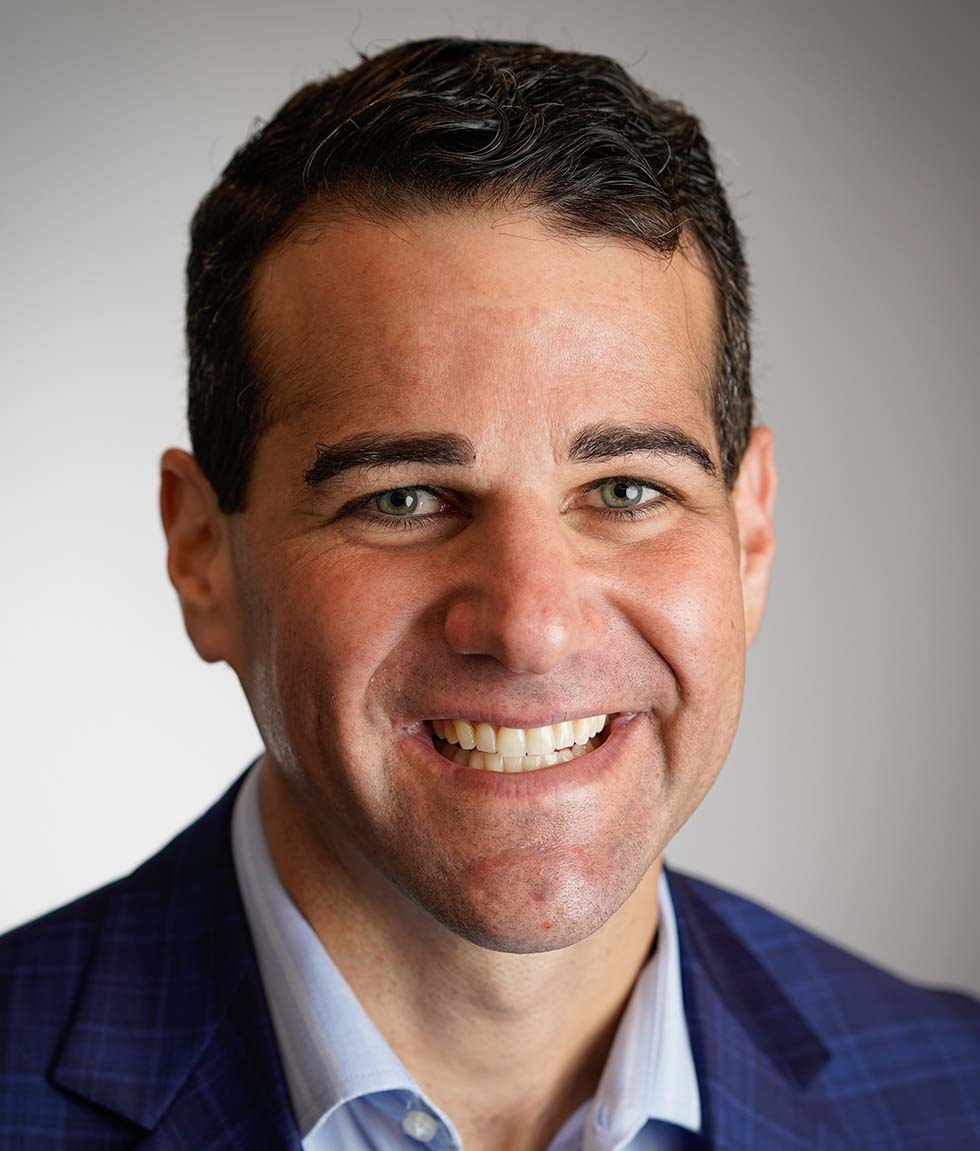Broadcasters Push AI to New Levels
Stations are overcoming early doubts to recognize its competitive edge

As TV broadcasters shift from wary tire-kicking to increasingly enthusiastic adoption of AI technology, new ways of doing things are taking hold at lightning speed in news production and myriad other aspects of station operations across the country.
At the same time, getting AI right no matter what it’s used for is top of mind everywhere. “We have to be really sharp about what we do with the efficiencies we find,” Sinclair Chief Innovation Officer Scott Ehrlich says. “It’s not just about the availability of functionality; it’s about how people actually use it. So it’s one step at a time.”
Pragmatic Recognition
Still, the overarching question now is, where will a growing stampede toward cutting costs in a competitive marketplace lead? As worries about the downsides—including the impact on jobs—give way to pragmatic recognition of the risks that come with being left behind, the likelihood grows that once an AI application lends a competitive edge to its users, other station groups will jump on board.

“AI represents a massive shift in culture and technology that we’ve only tapped the surface of,” Jeff Zellmer, executive vice president of digital operations at Fox Television Stations, says. Acknowledging that he, like everyone else, has “no idea where it’s going,” Zellmer voices the widely held perspective that “this is an area of growth we need to understand and be involved in.”
Preserving jobs remains a top priority for Fox Television and every other station group we talked to for this article, but the long view casts a different light on the issue. “Honestly, if we aren’t working on learning how to use AI every day, we won’t be ready to use it for something that’s absolutely critical for us,” Zellmer says. “Not taking advantage of that could have a big impact on jobs and our company’s fortunes over time.”
Station owners across the country say they’re taking cautious, responsible approaches to making AI an essential element in the operational toolbox, freeing people to do more things rather than replacing them. In growing numbers, they are implementing internal expertise and positions on the org chart aimed at vetting solutions and coming up with new ways to use the technology.
Gray Media’s approach typifies the current state of mind. “We’ve been very cautious with AI as a company, because viewer trust is our North Star,” Lee Zurik, senior vice president of news strategy and innovation at Gray Media, says. “We’ve been smart and methodical in how we’ve looked at AI, and now we’re ready to roll out some applications.”
The professional video industry's #1 source for news, trends and product and tech information. Sign up below.

Where things go from here and how fast largely depends on where the rubber meets the road as stations find reliable suppliers of whatever they’re looking for. AI “is an extremely exciting opportunity,” Zurik says, but the viability of products touting AI support “is all over the lot.” Talking with “dozens and dozens of vendors,” Zurik’s team is finding “some products are really good and can help us, but others still have work to do on accuracy and other issues,” he says.
Multilingual Audio
Not surprisingly at this early stage of exploration, there’s a wide gap among station groups as to how far caution governs the application of AI in operational workflows, newsgathering and on-air presentations. One station’s use case can be another’s bridge too far, especially when it comes to using AI to assist with news production.
Perhaps most dramatically, some broadcasters have been willing to break new ground by taking advantage of AI’s ability to play a role on air in live broadcasting. One category of vendor solutions drawing a lot of attention comprises real-time, video-
optimized audio translation platforms. These software systems can generate multilingual news, sports and other live commentary by replicating the voices and reshaping lip movements of presenters speaking in one language for simultaneous output in one or more alternative languages.
Among the most extensive uses of this application we’ve seen so far came in late February, when Sinclair announced it was using live AI translation technology supplied by Deeptune to test delivery of news in Spanish from English-speaking newscasters over live YouTube feeds from stations in Baltimore, San Antonio, West Palm Beach, Fla., and Las Vegas.
As described by Ehrlich, the move follows Sinclair’s successful use of generative AI last year when the company began using AI-enabled language translation with “Petko Unfiltered,” a Tennis Channel series, and in newscasts for use under hurricane conditions in the Gulf states.
Now, Sinclair is weighing whether to take the next step with the use of the translation technology in OTA broadcasts. “We have great confidence in the technology,” Ehrlich says. “It’s not like it can’t get better, but it’s reasonably mature at this stage. So you look at it and say, ‘Am I adding enough to the user experience to make this beneficial?’ ”

E.W. Scripps has been asking the same question, testing translations of NBC affiliate KRIS-TV newscasts in Corpus Christi, Texas, for delivery in Spanish over local Telemundo affiliate KAJA.
“Scripps is working to roll out near-time translation systems that would enable our news and sales teams to reach new audiences,” said Christina Hartman, vice president of emerging technology operations for Scripps. “By leveraging AI, it’s now possible to deliver content and advertising tailored for specific audiences that we would not have had the resources to produce even a few months ago.”
Public broadcasters, however, are not waiting. In March, XL8, an AI-driven real-time translation technology company, announced that it had successfully commercialized its real-time solution to translate English captions to Spanish. This breakthrough, achieved in collaboration with the Public Media Venture Group (PMVG), marks the first commercial deployment of AI-based real-time translation in U.S. public broadcasting, according to XL8.

The project was carried out in collaboration with DigiCAP, the Korea Radio Promotion Association (RAPA), and PBS station WCTE in Cookeville, Tenn., with XL8 serving as the core provider of real-time subtitle translation technology.
If at First You Don’t Succeed…
As Fox’s Zellmer notes, live language translation technology is getting a lot of attention across the broadcast industry, but many companies, including his, aren’t ready to take the plunge. “We did test it but didn’t see anything significant to justify moving forward,” he says. “Some people don’t like it, so we’re looking at whether there’s a way to give viewers a choice,” meaning the possibility of creating a “language feature in an app for people to choose rather than deciding for them.”
But Fox has no compunctions about trying things out, he says, noting that about a year and a half ago the company even went so far as to try using AI avatars in a couple of overnight newscasts going out on all platforms, which quickly proved to be a bad idea. “It shows we’re willing to experiment, but if it doesn’t help viewers with better experiences, it’s not right for us,” Zellmer says.
More generally, Fox is taking advantage of AI wherever it makes sense as a way to add efficiencies to workflows, such as vendor solutions that employ AI to expand content metadata and expedite searches across massive archives, which is “a huge area that can help us.” Fox is also using AI to help developers with coding in app-building.
Whether or not they endorse AI for an on-air A/V role, ever more station groups see the technology as a major asset strengthening TV journalism as a credible, vital alternative to the tsunami of “alternative facts” on the internet. The state of mind about what’s at stake for an industry highly dependent on local news reporting is well articulated by Michael Newman, whose title as director of transformation with Graham Media Group aptly describes the moment at hand.
“I came here because I believe in what journalism means to the communities we serve,” Newman says. “If we do AI the right way, it allows us to amplify our journalistic message and community voice and helps us to bring journalism into the modern world in ways we desperately need.”
Fred Dawson, principal of the consulting firm Dawson Communications, has headed ventures tracking the technologies and trends shaping the evolution of electronic media and communications for over three decades. Prior to moving to full-time pursuit of his consulting business, Dawson served as CEO and editor of ScreenPlays Magazine, the trade publication he founded and ran from 2005 until it ceased publishing in 2021. At various points in his career he also served as vice president of editorial at Virgo Publishing, editorial director at Cahners, editor of Cablevision Magazine, and publisher of premium executive newsletters, including the Cable-Telco Report, the DBS Report, and Broadband Commerce & Technology.

